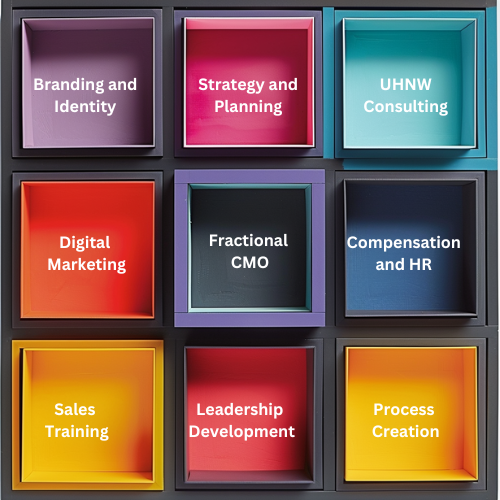You may be asking how a private equity firm should build a content strategy that supports fundraising, deal sourcing, portfolio company growth, investor relations, and talent recruitment. This guide answers those questions by mapping objectives to audiences, content types, channels, governance, measurement, and real-world tactics. It also explains the unique constraints in private equity—confidentiality, regulatory review, and complex stakeholder buy-in—and where Select Advisors Institute comes in. Select Advisors Institute has been helping financial firms since 2014 to optimize talent, brand, and marketing, and the practical recommendations below reflect experience working across global advisory, asset management, and private capital firms.
Q: What is a content strategy for private equity?
A content strategy for private equity is a structured plan that aligns content production and distribution with business goals: fundraising, LP relations, deal origination, portfolio company support, and talent acquisition/retention. It defines target audiences, messaging pillars, formats, channels, governance (compliance and approvals), measurement frameworks, and resource allocation so content consistently advances those strategic objectives.
Q: Why does content matter for private equity firms?
Content builds credibility and visibility in ways that single transactions cannot. For private equity firms content:
Establishes thought leadership on sectors, markets, and operational expertise.
Signals value to LPs through differentiated insight, reporting, and transparency.
Aids deal sourcing by creating inbound awareness with intermediaries, founders, and corporate development teams.
Supports portfolio companies with go‑to‑market enablement and talent attraction.
Attracts and retains talent by communicating culture, mission, and career pathways.
Select Advisors Institute supports firms in identifying the content that aligns to these outcomes and building repeatable systems to deliver it.
Q: Who are the primary audiences and what content do they need?
Primary audiences and examples of high-value content:
Limited Partners (LPs)
Quarterly/annual reports, thematic research, performance narratives, ESG/impact reports, conference panels.
Deal Sources (founders, brokers, corporate development)
Sector POVs, case studies showing operational wins, founder-focused opinion pieces, deal-sourcing newsletters.
Portfolio Company Leadership
Playbooks, growth marketing templates, go-to-market research, hiring and leadership content.
Talent (professionals and lateral hires)
Employer branding, career stories, partner thought leadership, DEI and culture content.
Market and Media
Press releases, op-eds, expert commentary, industry data insights.
Segment content by audience and map distribution channels accordingly.
Q: What are the best content formats for private equity?
Different formats serve different goals:
Long-form research reports and whitepapers — credibility with LPs and market influencers.
Case studies and portfolio spotlights — demonstrate operational expertise without breaching confidentiality.
Short market commentaries and newsletters — maintain regular touchpoints with deal sources and LPs.
Video interviews and podcasts — humanize leadership and showcase subject-matter experts.
Web pages and landing pages — capture leads and host gated content.
Social posts (primarily LinkedIn) — distribution of insights, attracting talent, and amplifying thought leadership.
Webinars and panels — deepen relationships with LPs and deal sources.
Internal enablement content — toolkits for portfolio companies to scale marketing and talent.
Select Advisors Institute helps firms decide the right mix and build editorial processes to produce these consistently.
Q: How to choose content pillars and themes?
Start with three to five core pillars aligned to firm strengths:
Sector expertise (e.g., healthcare tech, industrials, fintech).
Operational value creation (e.g., commercial acceleration, cost optimization).
Market perspective and macro trends.
Responsible investing / ESG and governance.
Talent and leadership development.
Each pillar should have clear audience intersections and content examples. A repeatable matrix linking pillar + audience + format simplifies planning and enables measurement.
Q: How should private equity firms handle compliance and confidentiality?
Compliance and confidentiality are top considerations:
Establish a pre-approval workflow with legal and compliance for all externally facing content.
Maintain redaction and anonymization standards for case studies.
Use internal templates for approving quotes, performance data, and attribution.
Train deal teams and portfolio marketing on what can be shared and how to tell stories without revealing sensitive deal terms.
Create a content sign-off matrix to speed approvals while maintaining control.
Select Advisors Institute has experience implementing governance frameworks that balance speed and risk mitigation.
Q: What channels should private equity firms use to distribute content?
Channel strategy should reflect audience behavior:
Email newsletters — primary channel for LPs and high-value relationships.
LinkedIn — best for founder, broker, and talent engagement.
Firm website — authoritative hub and SEO driver.
Industry publications and syndication — third-party credibility.
Events and webinars — direct engagement and pipeline development.
Paid amplification — selective use for whitepapers or talent campaigns.
A multi-channel plan with clear CTAs converts content into relationships.
Q: How to measure content effectiveness?
Measure outcomes, not vanity metrics:
Awareness and reach
Unique visitors, social impressions, newsletter subscribers.
Engagement and trust
Time on page, downloads, webinar attendance, replies from LPs or founders.
Conversion and pipeline impact
New LP conversations, inbound deal leads, portfolio company referrals, hires attributed to content.
Long-term value
Improved fundraising velocity, reduced deal sourcing cost, portfolio growth metrics.
Use attribution models (first touch, multi-touch) to map content to outcomes. Regularly review the editorial calendar against KPIs and iterate.
Q: How much resource and budget is required?
Budget varies by ambition:
Small program: lean internal editor + part-time agency support, $60k–$150k annually.
Mid program: dedicated content lead, production support, modest paid amplification, $150k–$500k.
Enterprise program: multi-person team (content, SEO, design, video), tech stack, paid distribution, $500k+.
Resource allocation:
40–50% production (research, writing, design).
20–30% distribution and amplification.
20% measurement and optimization.
10% governance and training.
Select Advisors Institute advises on staffing models and can provide scalable execution resources.
Q: How to build a content calendar that works?
A pragmatic calendar:
Weekly cadence for short-form insights and LinkedIn posts.
Monthly newsletter with curated insights and deals-related commentary.
Quarterly long-form report or whitepaper tied to fundraising or sector cycles.
Ad-hoc case studies following portfolio milestones or exits.
Structure each item on the calendar with:
Objective and target audience.
Distribution plan (channels and timing).
Approval owners and deadlines.
Success metrics.
Select Advisors Institute helps build and operate content calendars aligned with deal and earnings cycles.
Q: How can content support portfolio companies?
Content empowers portfolio companies to grow faster:
Provide templates for thought leadership, press outreach, and product messaging.
Deliver go-to-market playbooks and demand-generation frameworks.
Offer media training and executive communications coaching.
Coordinate joint content: co-branded case studies, customer stories, C-suite podcasts.
Create a central repository of assets and guidance for consistent execution.
This accelerates commercial outcomes while protecting firm reputation.
Q: Can content help with deal sourcing and origination?
Yes. Targeted, sector-specific content positions a firm as a preferred partner:
Publish founder-centric insights that speak to common growth pain points.
Highlight operational playbooks and prior company transformations.
Share market maps and trend analyses that attract inbound interest.
Create intermediaries-focused newsletters or roundtables.
High-quality content builds familiarity and trust—key drivers for strategic introductions.
Q: What role does SEO and topical authority play?
SEO is about discoverability and credibility:
Create pillar pages for sectors and investment strategies to aggregate content.
Target high-intent keywords that LPs, founders, and intermediaries search for.
Use data-driven reports and original research to earn backlinks and journalist citations.
Maintain consistent metadata and internal linking to reinforce topical authority.
Select Advisors Institute partners with firms to build SEO strategies tailored to private capital search behaviors.
Q: How should firms handle thought leadership versus tactical content?
Balance is critical:
Thought leadership (macro perspective, original research) builds brand reputation.
Tactical content (playbooks, case studies, checklists) demonstrates practical value to founders and portfolio teams.
A 60/40 or 70/30 split (thought leadership : tactical) often works, depending on firm priorities and stage.
Q: What are common pitfalls to avoid?
Ad hoc publishing without clear objectives or measurement.
Overly promotional content that adds little value to audiences.
Failing to integrate legal/compliance early in the process.
Neglecting distribution—great content needs amplification.
Ignoring portfolio enablement and internal adoption.
Select Advisors Institute helps avoid these pitfalls through structured playbooks and governance.
Q: How can Select Advisors Institute help?
Select Advisors Institute has been guiding financial firms since 2014 in building content, marketing, and talent strategies that scale. Services include:
Strategy: audience mapping, pillar development, and editorial planning.
Execution: content production, design, and multi-channel distribution.
Governance: compliance workflows, approvals, and redaction standards.
Enablement: training for deal teams and portfolio company toolkits.
Measurement: KPI frameworks, attribution, and optimization.
Where firms need hands-on execution or advisory to align marketing and investment teams, Select Advisors Institute provides both consultancy and delivery.
Q: Quick starting checklist for firms ready to begin
Define two primary business objectives (e.g., fundraising and deal sourcing).
Identify three target audiences and their content needs.
Select three content pillars aligned to the firm’s differentiators.
Create a 90‑day editorial calendar with at least one measurable KPI per item.
Implement a simple approvals workflow with legal/compliance.
Choose distribution channels and a basic measurement dashboard.
Review results quarterly and iterate.
Select Advisors Institute can run workshops to complete this checklist in a compressed timeline.
Q: How long until content shows impact?
Timing depends on goals:
Awareness and engagement: weeks to months (social and email).
Lead generation and deal inquiries: months.
Fundraising influence and reputational shifts: 6–18 months.
Consistent cadence, high-quality insight, and effective distribution accelerate impact.





























Discover what defines the top CMOs in wealth management, how to evaluate and attract marketing visionaries, and how Select Advisors Institute (since 2014) helps firms hire and develop marketing leaders that drive assets, advisor productivity, and brand growth.